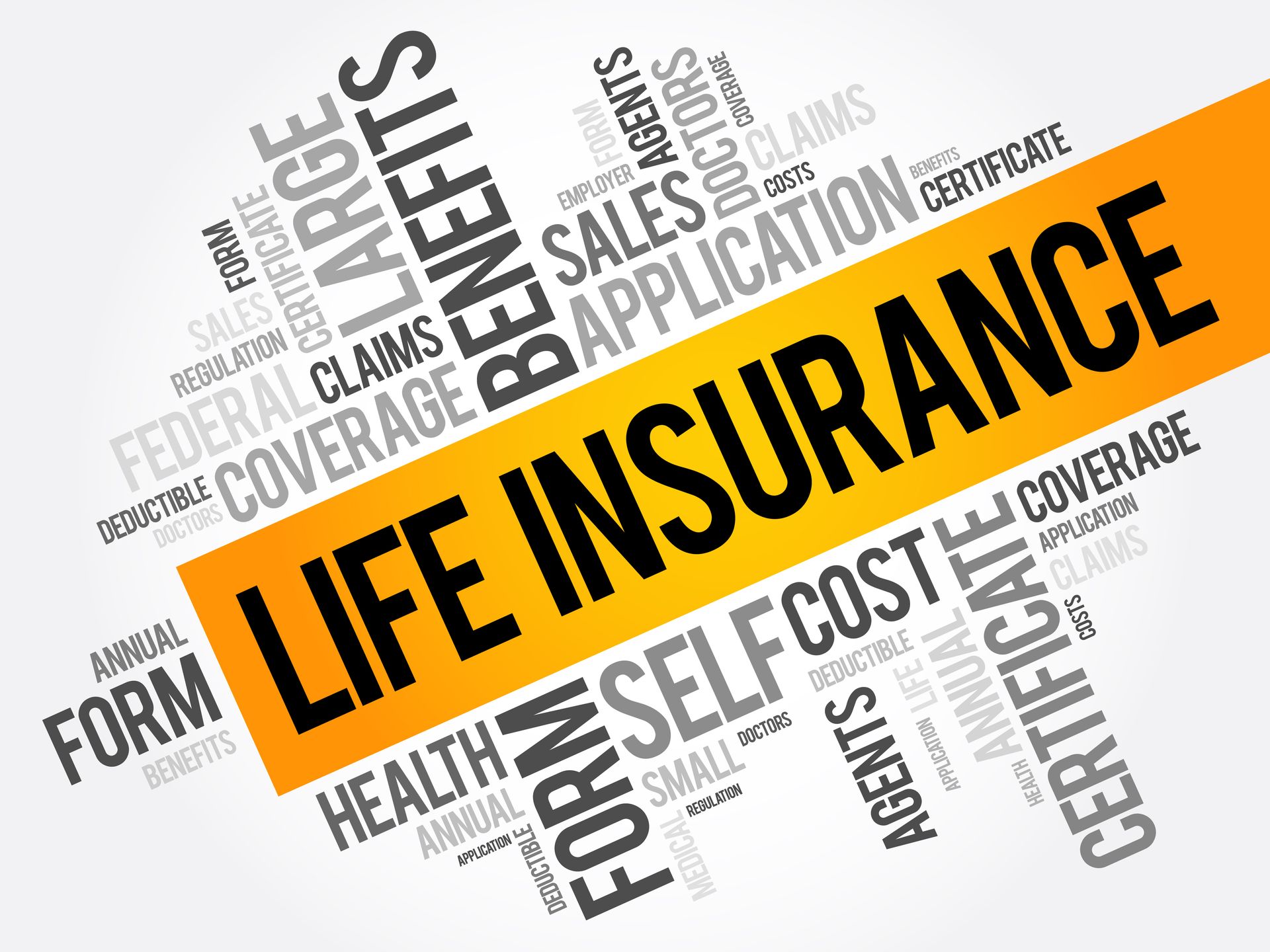Term Life Insurance Guide: What Term Insurance Is & Benefits of Term Life Insurance
What exactly is term life insurance, and how can it fit into your long-term financial planning? Term life insurance is designed to provide your beneficiaries with financial security for a specific duration, typically ranging from 10 to 30 years.
Term life insurance offers straightforward, cost-effective plans. It’s often considered a temporary but essential part of a well-rounded financial strategy. It also provides peace of mind for families that in case you lose a loved one who has provided financially, a spouse or family member can continue to have the same quality of life.
In this guide, learn about the specifics of term life insurance lengths, term life insurance premium costs and life insurance policy comparisons to help you decide if term life insurance aligns with your financial goals.
Key Takeaways
- Term life insurance offers a straightforward, cost-effective solution for temporary financial protection, with level premiums and a guaranteed death benefit during the specified term. Unlike other types of life insurance, term life insurance does not offer cash value accumulation.
- Term life insurance policyholders can select term lengths that align with their financial obligations and milestones. Term life insurance policyholders have options to renew or convert their policy upon the term expiration.
- The cost of term life insurance premiums is influenced by multiple personal factors, including age and health, with additional riders available to enhance and personalize coverage, as well as features like return of premiums, for added financial benefits.

Term Life Insurance Explained
Term life insurance offers a guaranteed death benefit during a specified term, should the unforeseen death of the policyholder occur during the term. The death benefit can be used to pay for everyday expenses such as food, mortgage payments and health insurance, as well as to cover outstanding debts, on items such as student loans and credit card debt.
Compared to permanent life insurance policies, term life insurance offers simplicity and affordability. It provides peace of mind without the complexities of cash value accumulation.
Term life insurance is a powerful financial safeguard. It offers predictability with level premiums and the assurance the policyholder’s loved ones/beneficiaries will be supported financially in the wake of the loss of the policyholder.
Term life insurance premiums remain fixed throughout the duration of the term, offering predictability and a simple way to budget for life insurance. Death benefits may be paid at any time during the term.
How Term Life Insurance Compares to Permanent Life Insurance
Term life insurance differs in several ways compared to other types of life insurance, like permanent options including whole life insurance and universal life insurance. Some differences include:
- Affordability: Term life insurance tends to be the most affordable type of life insurance policy, compared to options like permanent life insurance. Also, there’s a potential return of term life insurance premiums paid if the policyholder outlives the policy.
- Length: While permanent life insurance is designed to offer lifetime coverage, term life insurance typically only lasts a specified term. Once the term ends, coverage also ends, unless the policyholder renews or converts the term life insurance policy.
- Lack of cash value: Term life insurance doesn’t offer cash value accumulation or investment components like other policies might. This typically results in lower prices for term life insurance premiums.
For individuals who are looking for a simple form of life insurance that offers financial protection for a specified term, term life insurance can be an affordable option.
How to Choose Term Length in Term Life Insurance
Term lengths in term life insurance may range from a decade to 40 years. To determine the right term that works for your life insurance needs, and to provide essential financial protection for your loved ones, it’s helpful to anticipate major life events and the financial needs of your loved ones over time.
Some life situations to consider include:
- Your age: This affects how long you anticipate working and when you’ll retire. Your income may impact your family significantly, especially if you’re the primary breadwinner in your family and if your spouse and/or children rely on your income.
- Dependents: If you have children, you will want to consider their future financial needs, such as college tuition costs and leaving a legacy in terms of financial providing, in case you pass away.
- Outstanding debts and financial obligations: One of the main reasons why people choose to obtain life insurance is to ensure the loved ones they leave behind are able to financially cover outstanding debts and financial obligations, such as a mortgage payment and credit card debt. If you are currently working on paying off what you owe, you’ll want to factor in those amounts as you calculate a term life insurance coverage period and policy amount.
- Your health: Term life insurance policies may require a medical exam, which means the state of the policyholder’s health will impact their premium costs. There are some life insurance options that don’t require a medical exam. Depending on how comfortable you are with undergoing a medical exam and with having your current state of health impact your life insurance premiums, term life insurance may or may not be the best option.
Many term life insurance policies will offer an option for renewal and/or conversion once the term of the policy is coming to an end. There may be yearly renewable term policies available that don’t require medical exams. Some term life insurance policyholders choose to convert a term life insurance policy into a permanent life insurance policy. Before you commit to a term life insurance policy, talk with providers about what future options are available.

How Much Does Term Life Insurance Cost?
Generally, term life insurance is less expensive the younger you are when you sign up for a policy, and the better condition your health is in. For example, a 25-year-old in good health can get a relatively cheap term life insurance policy, compared to a 50-year-old who smokes cigarettes. The earlier you sign up for term life insurance, the easier it is to lock in the lowest rate for the life of the term life insurance policy.
Term Life Insurance Cost Examples
To illustrate cost estimations for how much life insurance costs, the following examples detail potential pricing scenarios.
Term life insurance pricing example #1
James and Emily, both age 33 and in excellent health, are balancing a busy household with two children and dual incomes of $80K each, totaling $160K annually. They currently have a mortgage of $400K, vehicle loans amounting to $60K and other debts totaling $35K, with monthly debt payment obligations reaching $6k.
The solution(s): Given their situation, the following are practical term life insurance policy recommendations for their needs.
- $2M term life insurance policy: Each of them securing a term life insurance policy with this death benefit would comprehensively address their debts and provide significant financial support for the surviving spouse to handle monthly expenses comfortably. Given their excellent health, they would likely each qualify for a preferred rate. A 20-year term policy would likely cost about $70 per month per person.
- $500K term life insurance policy: This more economical term life insurance option still offers substantial financial protection. The death benefit would assist in clearing existing debts, in the event of one spouse’s untimely passing. Opting for a 20-year term life insurance policy, the estimated monthly premium for each policyholder would be approximately only $25 a month at a preferred rate.
Term life insurance pricing example #2
Richard, age 63, and Janet, age 59, are approaching a new chapter in their lives. With their children independent and financially stable, Richard is nearing retirement and the loss of his company-provided life insurance. The couple currently has a $225K mortgage balance and $20K in additional debts, with monthly expenses totaling $4.5K. Despite being in good health and on some routine medications managed by his primary care physician under his family health insurance plan, Richard faces new life insurance needs.
The solution(s): Considering their desire to minimize costs during retirement, the following are tailored life insurance recommendations for Richard and Janet.
- $600K term life insurance policy: This life insurance policy would allow Richard to comprehensively cover their debts while providing Janet with a stable financial cushion for ongoing expenses, potentially unmet by her future Social Security benefits. Given Richard’s good health, he may qualify for a standard-plus rate, with an estimated monthly premium of $500 for a 20-year term.
- $300K term life insurance policy: As a cost-effective alternative, this life insurance policy would enable the couple to pay off their mortgage and eliminate their debts. For a 20-year term at a standard-plus rate, the monthly life insurance premium would be approximately $260.
You can see the drastic difference in monthly premium costs based on age. We encourage individuals and families who are interested in strong financial planning to consider life insurance as an essential component.

Living Benefits and Riders in Term Life Policies
Term life insurance policies may include the option to add riders that add a layer of protection and personalization to the term life insurance coverage. Some common riders that can be added to term life insurance policies include:
- Accidental death benefit rider: This adds an additional layer of financial protection, should tragedy strike due to a qualifying accident. Accidental death benefit riders may offer coverage up to the age of 70 or later.
- Waiver of premium rider: The waiver of premium rider may ensure that term life insurance coverage endures even when the policyholder encounters a disabling circumstance that might otherwise compromise their ability to maintain coverage.
- Critical illness rider: A critical illness rider may enable the policyholder to take out life insurance financial benefits while they’re alive, if they need financial coverage for critical illness treatment.
Other rider types include a child rider, a disability income rider and a long-term care rider. Riders added on to a term life insurance policy extend the financial coverage of the life insurance policy beyond the traditional death benefit.
Term life insurance policyholders may also have the option to add a return on premium feature in a term life insurance policy. This feature means premiums paid throughout the policy may return to the policyholder if they outlive the term. This feature transforms a life insurance policy into a risk-free investment in one’s future, as it offers both protection during the term and a potential financial windfall at its conclusion.
Riders and features like these enable term life insurance policyholders to further customize their plans based on their unique needs.
Adjusting Life Insurance Coverage Over Time
As your life’s financial needs evolve, you may be able to change your term life policy features, as well. Some life events that may motivate you to change your term life insurance policy include:
- The birth of a child
- Buying a new home
- Starting a business
- Paying off debts
- Planning for retirement
By regularly reviewing and adjusting your term life insurance coverage, you can ensure it continues to meet changing needs throughout your life. This adaptability makes term life insurance a versatile tool in one’s financial repertoire, providing temporary yet essential protection during key periods of life.

Transitioning to Permanent Life Insurance
Another option to consider is transitioning a term life insurance plan to permanent life insurance. This transaction may offer several benefits, including:
- Secures lifetime life insurance coverage
- Requires no new medical examination
- Premiums honor original underwriting classification
If you’re interested in lifetime insurance coverage, keep in mind the option to transition a term life insurance policy to a permanent life insurance plan for enduring coverage.
How Term Life Insurance Claims Work
As you select a term life insurance provider, it’s helpful to evaluate company ratings to discern an insurer’s financial strength and ensure the company stands on solid ground and is capable of meeting their obligations.
The process of claiming the death benefit under a term life insurance policy typically requires the following steps.
- Notify the term life insurance broker or term life insurance company of the insured’s passing.
- Complete claim forms provided by the term life insurance company.
- Submit a certified death certificate and any other required documents.
- Provide any additional documentation requested by the term life insurance company.
- Wait for the term life insurance company to review and process the claim. This typically takes about a week or two, although it may take longer, depending on the circumstances and state regulations.
Once the term life insurance claim is approved, the insurance company will fulfill its promise by paying the death benefit.

How to Purchase Term Life Insurance
Term life insurance can be an important part of a comprehensive financial plan. To purchase the best term life insurance plan for your unique financial situation, it’s important to carefully assess your and your family’s financial goals and work with a life insurance broker who can help you evaluate term life insurance policy options, company reputations and the fine print of term life insurance coverage details.
To choose a term life insurance policy, or other type of life insurance policy, that perfectly aligns with your financial goals and provides the protection your family deserves, book a free consultation with our life insurance experts today. We’re ready to assist you in navigating your options to select a plan that ensures peace of mind for years to come. Reach out so we can help you make an informed decision that works for you and your loved ones.
Contact us online, call 602.617.4017, or email
quotes@azhealthinsurancebrokers.com for information.
Term Life Insurance FAQs
How does term life insurance differ from permanent life insurance?
Term life insurance offers coverage for a specified term without cash value accumulation, which makes it more affordable than permanent life insurance. Permanent life insurance provides lifetime coverage and often includes a savings component, making it a more comprehensive option for long-term financial security.
Can I renew my term life insurance policy once it expires?
Yes, you can renew your term life insurance policy each year after it expires. However, be aware that term life insurance premiums usually increase with each term life insurance renewal. As an alternative, you might consider applying for a new term life insurance policy, which may offer different rates and coverage options, based on your age and health at the time you apply.
What factors influence the cost of term life insurance?
Several factors influence the cost of term life insurance, including age, health, smoking status and lifestyle/occupation. Typically, younger and healthier individuals pay lower term life insurance premiums.
What are term life insurance riders? How do term life insurance riders enhance a term life insurance policy?
Term life insurance riders are additional provisions that can be added to a term life insurance policy, offering extra benefits, like accidental death coverage or access to the death benefit, in case of chronic illness. These enhance the overall term life insurance coverage and flexibility of the policy.
Is it possible to adjust my term life insurance coverage as my financial situation changes?
Yes, you can adjust your term life insurance coverage as your financial situation changes, by applying for a new term life insurance policy with coverage that better suits your current needs. If you find the terms of the new term life insurance policy are favorable, you can then decide whether or not to cancel your existing policy or to maintain both, depending on what best fits your circumstances.
What are the advantages of term life insurance?
Term life insurance can help you ensure your dependents are financially cared for should you pass away when they still need financial help to cover expenses, such as a mortgage and debt repayment. A term life insurance policy can provide peace of mind that your family will be financially protected in the future. Compared to permanent life insurance policies, term life insurance premiums also tend to be less expensive.
What are the disadvantages of term life insurance?
One of the main disadvantages of term life insurance, compared to permanent life insurance, is that life insurance coverage is temporary and ends once the term is over. Because cost is also primarily based on the policyholder’s age and health, the older you are when you secure a policy, the more expensive your premium may be.
When should you get a term life insurance policy?
The younger and healthier you are when you apply for a term life insurance policy, the lower the rate you can expect to lock in. Even single individuals who don’t currently have dependents should consider term life insurance to lock in a low rate now, as circumstances may change in the future.
Who should get a term life insurance policy?
If you or your spouse has dependents who depend on you financially, a term life insurance policy safeguards your loved ones from financial strain should the primary breadwinner pass away. A term life insurance policy could also be beneficial for non-primary breadwinners. For example, if a stay-at-home mom passes away, and the primary worker must pay for childcare for surviving children, a term life insurance policy held by the stay-at-home mom can provide financial protection for the surviving spouse.
What are the risks of not having a term life insurance policy?
If there’s no term life insurance policy in place, not only will the surviving family members need to cover everyday expenses like mortgage payments, food and healthcare, but they’ll also be responsible for paying outstanding debt. A lack of a life insurance policy means a family will need to be able to bear the financial burden someone in their family leaves behind. A term life insurance policy can ease this burden.











